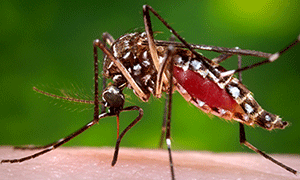
 The Centers for Disease Control and Prevention (CDC) recently posted a series of zika toolkits — online resources and information on how to prevent the Zika virus from being transmitted in outdoor settings. These toolkits contain lots of relevant information for park and recreation agencies as well as guidance for supervisors and outdoor workers.
The Centers for Disease Control and Prevention (CDC) recently posted a series of zika toolkits — online resources and information on how to prevent the Zika virus from being transmitted in outdoor settings. These toolkits contain lots of relevant information for park and recreation agencies as well as guidance for supervisors and outdoor workers.
What is significant about this guidance is that both supervisors and workers bear a responsibility for taking preventative actions to prevent exposure to Zika. While this is presented as guidance only, it would behoove any agency to carefully consider the guidance and take appropriate actions regarding worker awareness, provision of repellents and, potentially, modifications of summer uniforms for workers.
Of particular interest in the toolkit is a fact sheet containing interim guidance from the Occupational Health and Safety Administration (OSHA) for how to protect workers and how to deal with worker concerns. Note that these recommendations are presented as interim guidance, not regulation or law.
Here are some of the highlights from the toolkit and the OSHA FAQ that have a bearing for park and recreation outdoor workers:
- Recommended supervisory actions:
- Provide information and training to workers on what Zika is and what the threat is.
- Provide insect repellents, hats, gloves and other protective clothing.
- Provide uniforms or allow clothing that meets CDC recommendations (long-sleeved, loose, lightweight, covers arms, hands, legs).
- If requested by workers who are pregnant or trying to become pregnant or male partners of those who are or are trying to become pregnant, consider alternative indoor assignments.
- Provide information and training to workers on what Zika is and what the threat is.
- Recommended worker protections:
- Wear lightweight loose-fitting clothing that covers arms, legs and other exposed skin. Wear hats, and wear socks and shoes that cover ankles and feet.
- Use insect repellents according to CDC guidance. Research suggests that repellents containing DEET (N,N-diethyl-m-toluamide) or picaridin (KBR 3023) typically provide longer-lasting protection than the other products, and oil of lemon eucalyptus (p-menthane-3,8-diol) provides longer-lasting protection than other plant-based repellents. Permethrin is another long-lasting repellent that is intended for application to clothes, but should not be applied directly to skin.
- To avoid reaction to DEET or other ingredients in insect repellents, read and follow the directions on all insect repellents before use. Spray insect repellent (permethrin) on the outside of clothing, as it is possible for mosquitoes to bite through thin clothing.
- After returning indoors and before eating, use soap and water to wash skin that has been treated with insect repellent. Reapply repellent when returning outdoors or after eating.
- Products that combine sunscreen and repellent are not recommended, because sunscreen may need to be reapplied more often and in larger amounts than needed for the repellent component to provide protection from biting insects. The best option is to use separate products, applying sunscreen first and then applying the repellent.
- Wear lightweight loose-fitting clothing that covers arms, legs and other exposed skin. Wear hats, and wear socks and shoes that cover ankles and feet.
Also on the CDC Zika website are toolkits for camps, daycare centers and youth-serving organizations containing useful information if your agency conducts such programs with staff and public participants outdoors or partners with non-profit organizations that do such programs.
Zika continues to make headlines on a daily basis, and what is believed to be the first locally transmitted case in the U.S., has been reported. At greatest risk are localities in the South, the Eastern seaboard, the West coast, and all along the Gulf states, but possibly also further into the Northeast and Midwest depending on weather and temperature.
Zika is transmitted primarily by mosquitoes, and one mosquito species, Aedes aegypti, is the most likely carrier. This mosquito is also called the Yellow Fever mosquito because it has had a history of transmitting that disease especially in urban areas and areas of high poverty where there is poor sanitation, standing water and little protection from mosquito bites.
The disease itself is relatively mild, and some people won’t even know they have contracted it because the symptoms of rash, slight fever and minor aches are so minimal that many who have it don’t even realize they do. However, Zika is very dangerous for those women who either are pregnant or are planning to become pregnant. It can cause a condition in babies known as microcephaly in which the skull of infants is much smaller than normal causing brain damage and other neurological harm.
There is now confirmed evidence that Zika can be transmitted sexually, so males may also be carriers of Zika and can infect their partners. All in all, Zika is a pretty nasty disease, and medical science has not yet figured out all the answers on how to stop it or prevent it.
Combatting Zika will be an all hands-on-deck effort. Park and recreation agencies have a responsibility to their workers who spend time outdoors as part of their job, and workers have a responsibility to take recommended precautions. Visit the CDC website for more information on Zika generally, and more specific information on recommended actions from OSHA/NIOSH. If your agency operates camps, day-care programs, and other activities that could potentially involve public exposure to Zika, see also the toolkits for these particular settings.
NRPA is also compiling all resources related to this virus in our Zika and Parks Resource Center.
Richard J. Dolesh is NRPA's Vice-President of Conservation and Parks.

